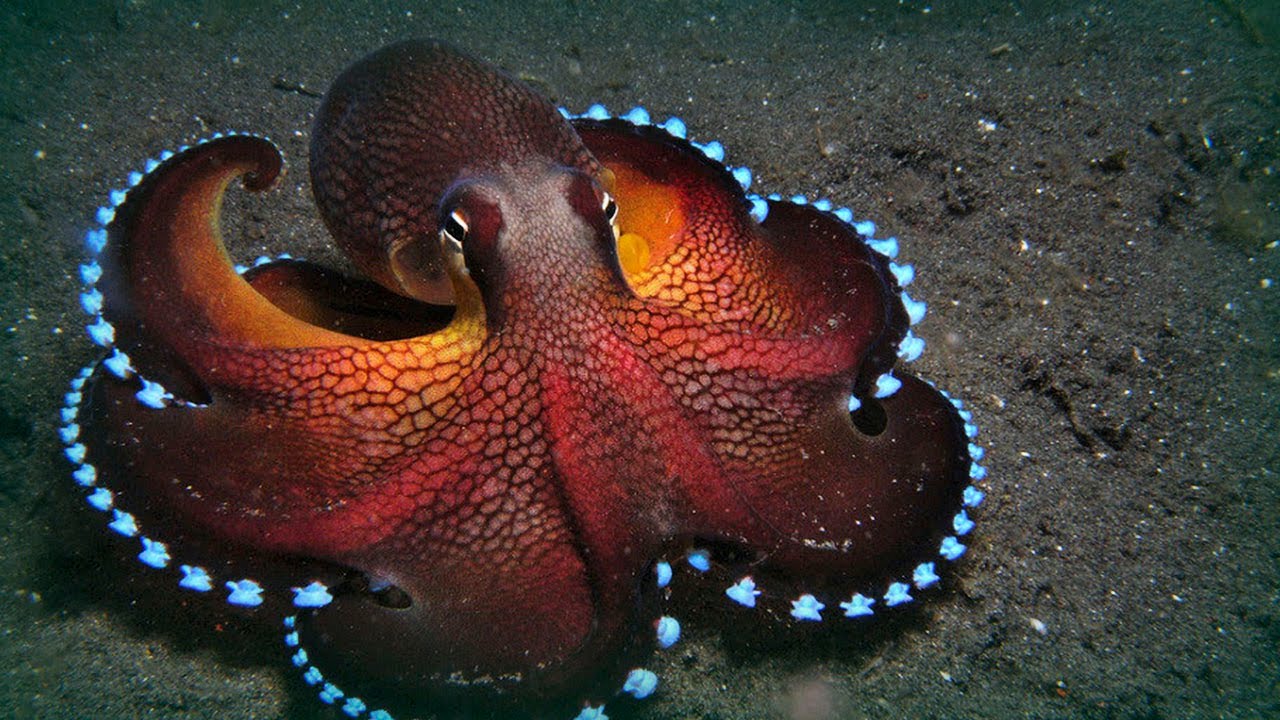One of the most alien-looking animals on planet Earth is the octopus. They have eight appendages, a big head with a super-intelligent brain, and are fearsome predators. All five of the world’s oceans are home to them, and they frequently scour the shorelines for food including crabs, snails, and small fish. But their cardiovascular system is different from other animals. If you are wondering how many hearts does an octopus have, this write-up will assist you along with their functions and other Interesting facts.
How many Hearts Does An Octopus Have?
The majority of vertebrates, including humans, have a single central heart, while octopuses do not. Instead, their bodies are pumped with oxygenated blood by multiple hearts that collaborate together. Now the question aries, how many hearts does an octopus have? An average octopus has three hearts- one systematic heart and two branchial hearts.
The systematic heart serves as the main circulatory pump, while two branchial hearts help. All three of these hearts are found inside the animal’s brain. Although it divides the responsibilities, this isn’t really that different from how the heart functions in other organisms.
Because their blood is thicker because to the copper-rich hemocyanin, octopuses need three hearts to pump blood to and from their gills and throughout their bodies. This is in contrast to humans and other animals, who only need one heart. The octopus’s three hearts are necessary for pumping blood through its gills and throughout its body, yet they serve different functions.
Functions of The Three Hearts
Now that you know how many hearts does an octopus have, let’s have a look at the functions of them.
1.The systemic heart
This is the main, central heart located near the octopus’s head. It pumps blood to the rest of the body through the major arteries. The systemic heart does the bulk of the circulatory work and keeps blood flowing to the organs and tissues. It pumps blood through the entire body in a closed loop system.
The key functions of the systemic heart are:
- Circulating oxygenated blood to the whole body
- Providing nutrients and removing waste from organs and tissues
- Maintaining blood pressure and circulation
- Delivering blood to the gills for re-oxygenation
2.The branchial hearts
Octopuses have two smaller branchial hearts located near each set of gills. These branchial hearts pump blood through the gills where it gets re-oxygenated.
The branchial hearts have several important functions:
- Pumping blood to the gills for oxygenation
- Building up systemic blood pressure needed to pump blood all around the body
- Allowing for more efficient oxygenation by concentrating blood flow through the gills
- Maintaining circulation and oxygen supply when the systemic heart is damaged or weakened.
3.Coordinated Three Hearts Hystem
People who want to know how many hearts does an octopus have should be aware of the coordinated system. The three hearts work in concert to separate oxygenated and deoxygenated blood for improved circulation efficiency.
- The branchial hearts pump blood to the gills while the systemic heart pumps blood to the body simultaneously
- This parallel system allows high oxygen extraction even during periods of high activity
- The dual branchial hearts provide backup if one fails or is damaged
- The systemic heart maintains circulation to the brain and critical organs even if the branchial hearts weaken
- This anatomy supports the octopus’s high metabolism and oxygen needs
Other Interesting Facts About Octopus
Here are some interesting facts about the octopus’s body and anatomy, besides their 3 hearts:
- Nine brains – If you are looking for how many hearts does an octopus have, you will be surprised to know that octopuses also have 9 brains. They have one central brain and then a smaller brain in each of their 8 arms. The arm brains allow the arms to act semi-autonomously without input from the central brain.
- Blue blood – An octopus’s blood contains the copper-rich protein hemocyanin which makes it blue in color, unlike the red iron-rich hemoglobin in human blood. The hemocyanin efficiently binds and transports oxygen.
- Camouflage – Special color changing cells called chromatophores allow the octopus to instantly camouflage themselves by matching their surroundings. Muscles pull the pigmented chromatophore cells closer to the skin to blend in.
- Beak – The sharp, parrot-like beak of the octopus is their main tool for cracking the shells of prey like clams and crabs. The strong beak is made of keratin, the same material in human fingernails.
- Jet propulsion – By forcibly contracting their mantle cavity and funnelling water through their syphon, octopuses can rapidly propel themselves through the water via jet propulsion. Speeds of up to 25 mph have been recorded.
- Arms – An octopus has 8 flexible, agile arms lined with hundreds of suckers. Their arms have no skeletal support but can bend in any direction and squeeze into tight spaces.
- Ink clouds – Octopuses can release a cloud of dark ink to confuse predators and cover a speedy escape. The ink gland holds black pigments like melanin.
- Keen vision – Octopuses have excellent eyesight including depth perception. Their eyes use a pinhole iris that allows them to adjust to varying light conditions.
- Suckers – The suckers on an octopus’s arms have chemoreceptors that allow them to taste and smell. This helps the octopus gather information about objects they touch.
- Size changing – Octopuses can compress and expand their bodies allowing them to fit through any space larger than their beak. They can squeeze through incredibly small openings.
- Regeneration – Octopuses have impressive regenerative abilities, being able to regrow lost arms over time. Their decentralised nervous system rewires itself after injury.
- Venom – The saliva of the common octopus contains venom that can induce paralysis in prey. The blue-ringed octopus has very potent venom that can be fatal to humans in rare cases.
Overview
Knowing how many hearts does an octopus have can give you an idea how the survival system of marine mollusks. Depending on the species, the circulatory system of marine mollusks may be open or closed. The main mollusk classes differ in terms of structure and function.














